The path of a person who has experienced the trauma of war often resembles a complex labyrinth filled with uncertainty, a search for solutions, and inner dead ends. This powerful metaphor formed the basis of the art therapy session “Labyrinth. In Search of an Exit”, which took place on July 4, 2025, within the walls of our Center for Contemporary Art (room 302 c) as part of the implementation of the international, large-scale EU-funded Erasmus+ KA220-ADU project “TRUST” – Trauma of refugees in Europe: An approach through art therapy as a solidarity program for Ukraine war victims (Grant No. 2024-BE01-KA220-ADU-000257527).
The project title is decoded as follows:
TRUST
T – Trauma
R – Refugees
U – Ukraine
S – Solidarity
T – Therapy
The project is co-funded by the EU and led by the Centre Neuro Psychiatrique St-Martin from Belgium, in partnership with the National University “Yuri Kondratyuk Poltava Polytechnic” (Ukraine), Greek Carers Network EPIONI (Greece), Fondazione Don Luigi Di Liegro (Italy), Lekama Foundation (Luxembourg), EuroPlural Project (Portugal).
The session was moderated by Olena Ostrohliad, Senior Lecturer at the Department of Fine Arts, and Olena Kryvenko, Assistant at the Department of Psychology and Pedagogy, practising psychologist at Poltava Polytechnic.
The art therapy session “Labyrinth. In Search of an Exit” was designed to symbolically process feelings of uncertainty and confusion, support participants in their search for solutions and internal resources, and foster a sense of connection and shared experience. At its core lies a profound and powerful image – a map of our life wanderings, a mirror of uncertainty, and a silent guide toward a way out. For a soul that has endured the trauma of war and forced displacement, the feeling of being lost or stuck in a labyrinth of painful circumstances is deeply real. Thus, participants were invited not just to talk about it, but to entrust their emotions to paper.
By creating their labyrinths, each participant placed their “self” at its centre, giving visual form to their inner state. This marked the first step toward healing, acknowledging confusion and, thus, gaining the opportunity to transform it. But the real miracle happened at the edges of the page. Each labyrinth did not end in isolation – it gently flowed into the neighbour’s drawing. Lines that had seemed to lead to dead ends became pathways toward another person. In this way, separate worlds were interwoven into a single canvas, clearly illustrating that even in the darkest of labyrinths, we are not alone. Our paths intersect, and within that intersection, support, hope, and a shared way forward can be found.
Drawing the labyrinth proved to be an effective tool for expressing and processing feelings of uncertainty. Participants were able to visualise their inner states of confusion, hopelessness, and search for direction, which helped externalise and safely explore these complex emotions. Through creating exits, turns, and paths, they symbolically sought real-life solutions, which helped restore a sense of control over their circumstances. Placing their self-image at the centre of the labyrinth helped participants focus on themselves, recognise the importance of their feelings and needs, and highlight the value of their inner world.
Moreover, integrating individual labyrinths with the drawings of others visually reinforced the idea of interconnectedness: even in difficult situations, we are not alone. There are others whose paths intersect with ours, who can offer support or help us find a way out. This metaphor strengthened the feeling of group cohesion. A key final element was the development of mental flexibility and creative thinking. The need to consider neighbouring images and potential connections stimulated participants to think outside the box and explore innovative approaches to problem-solving.
The art-therapy session “Labyrinth: In Search of an Exit” proved to be a remarkably effective tool for psychological support. It allowed participants to symbolically work through feelings of uncertainty, confusion, and emotional “stuckness”, turning them into visual forms that could be explored and controlled. Creating their labyrinth-activated internal resources, encouraged solution-seeking, and helped reveal potential ways out of difficult life situations. Participants regained a sense of control over their emotional state and decision-making process, even in the face of challenging external circumstances.


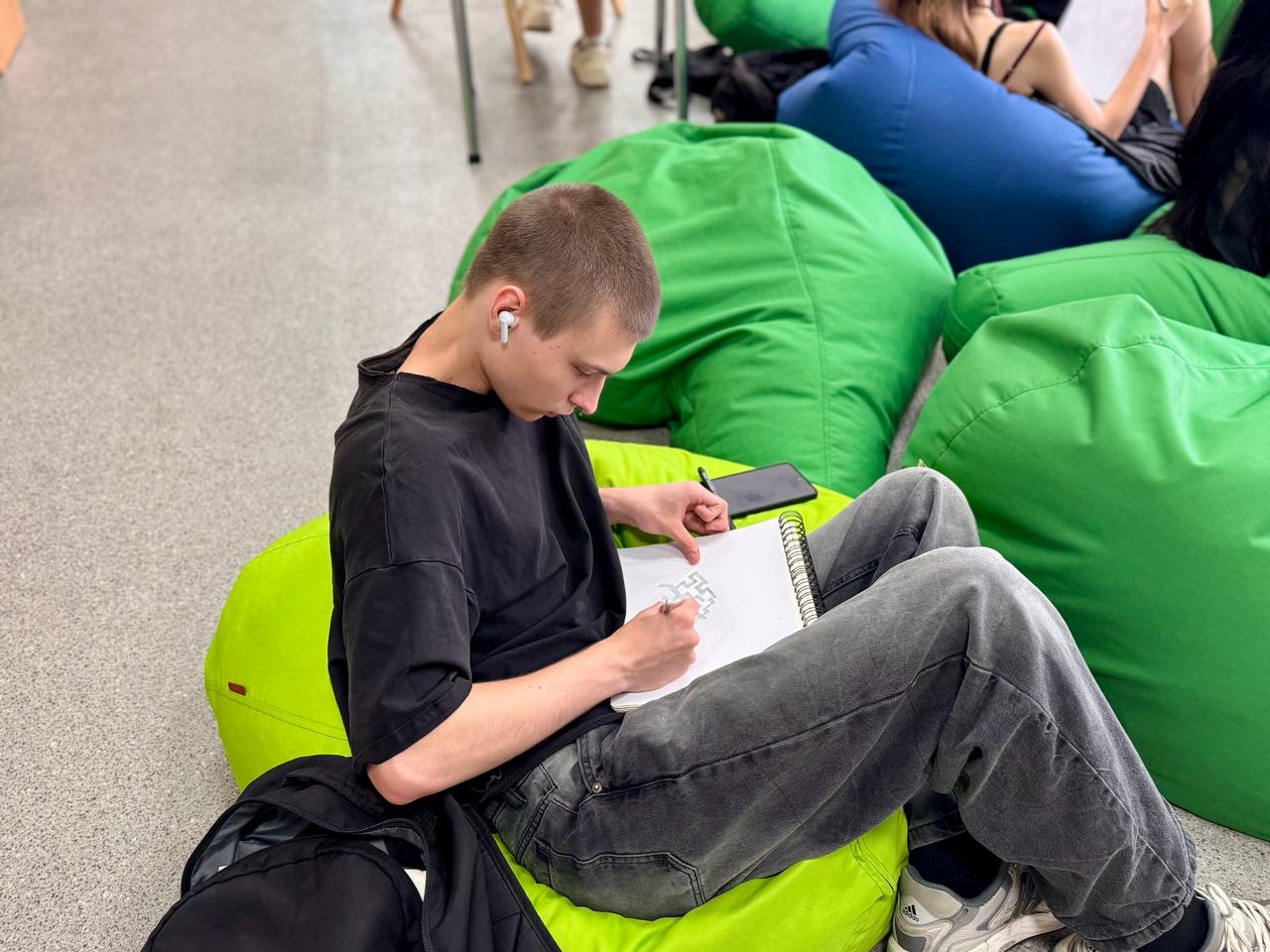
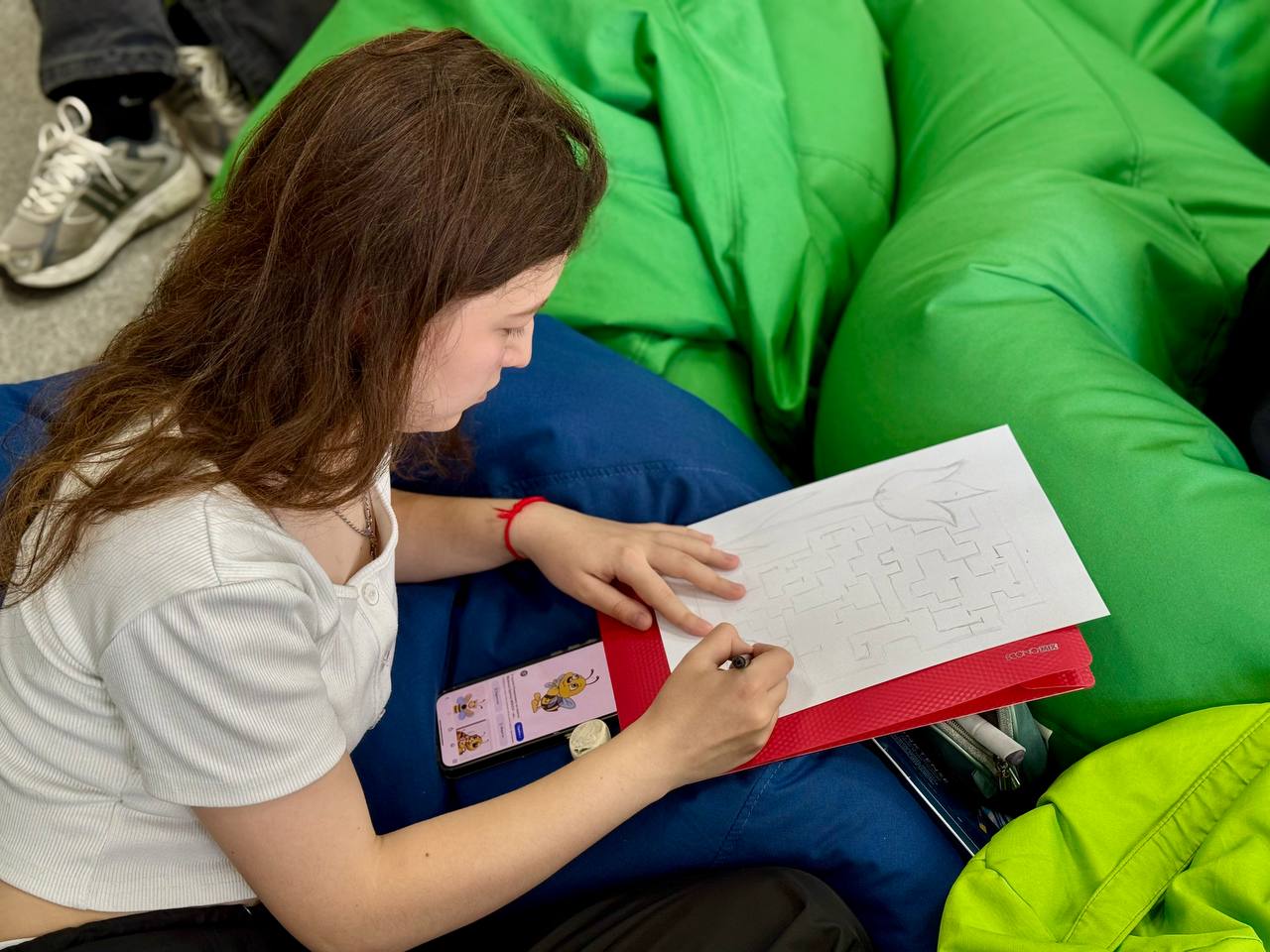
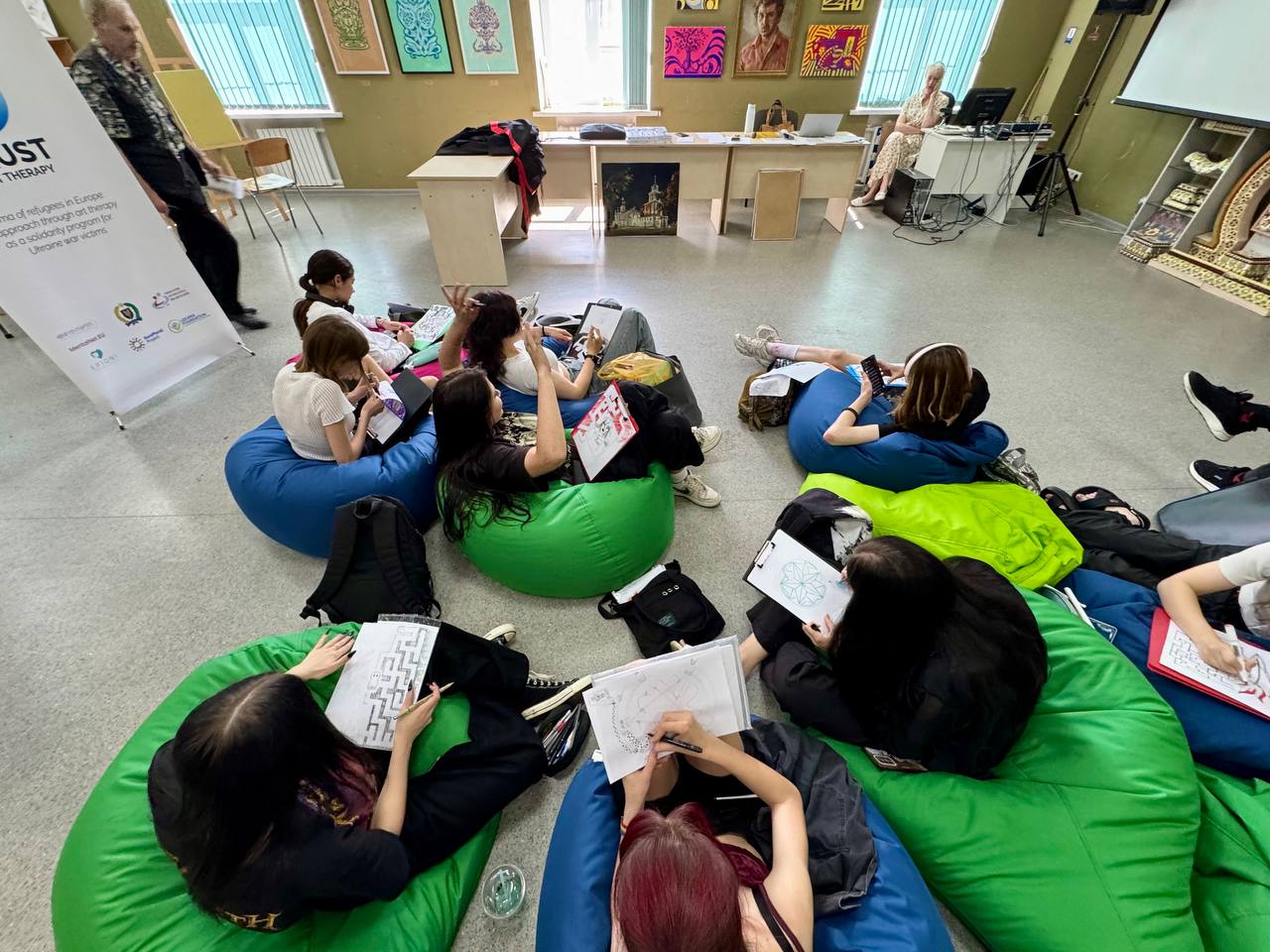
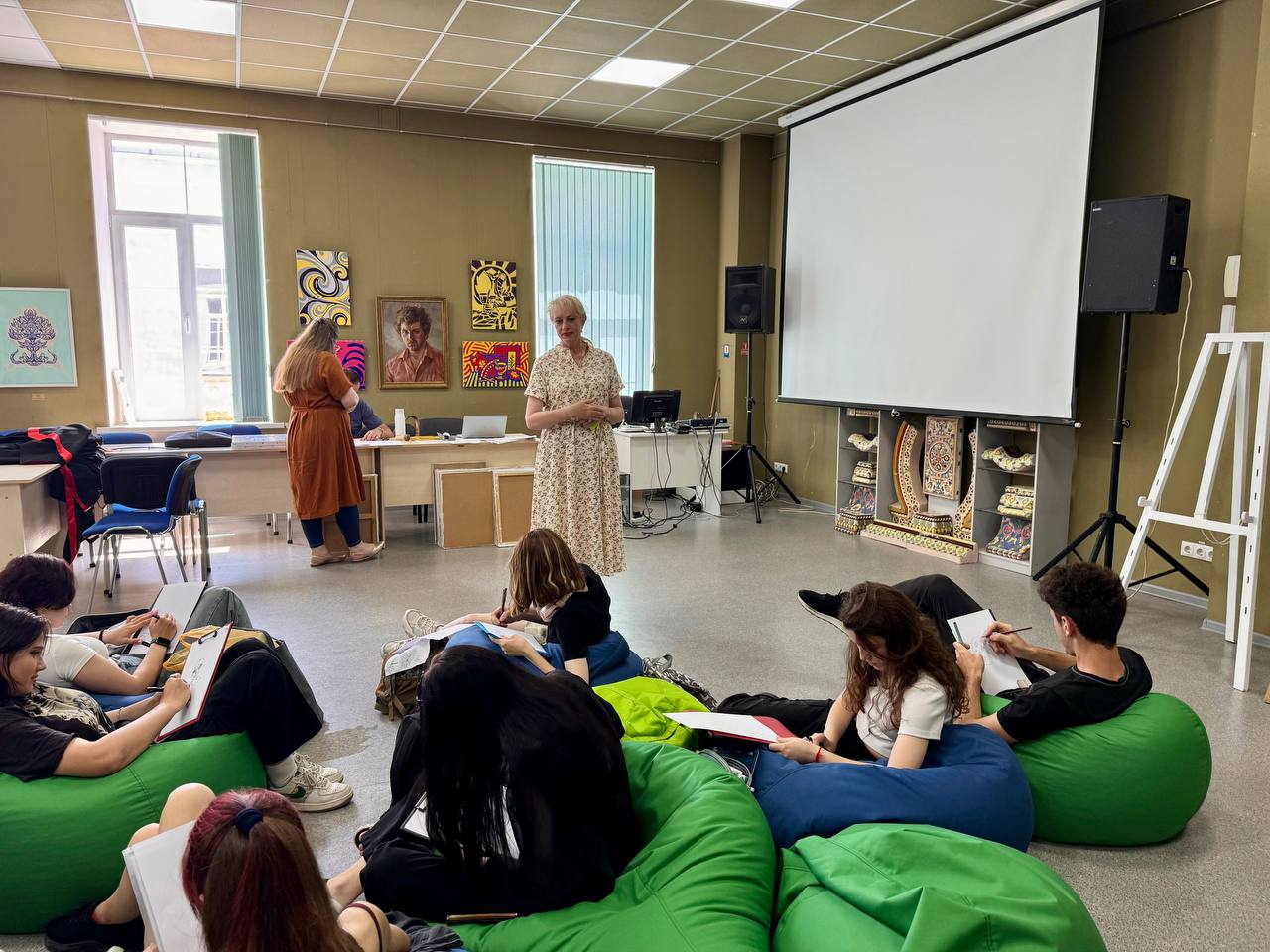
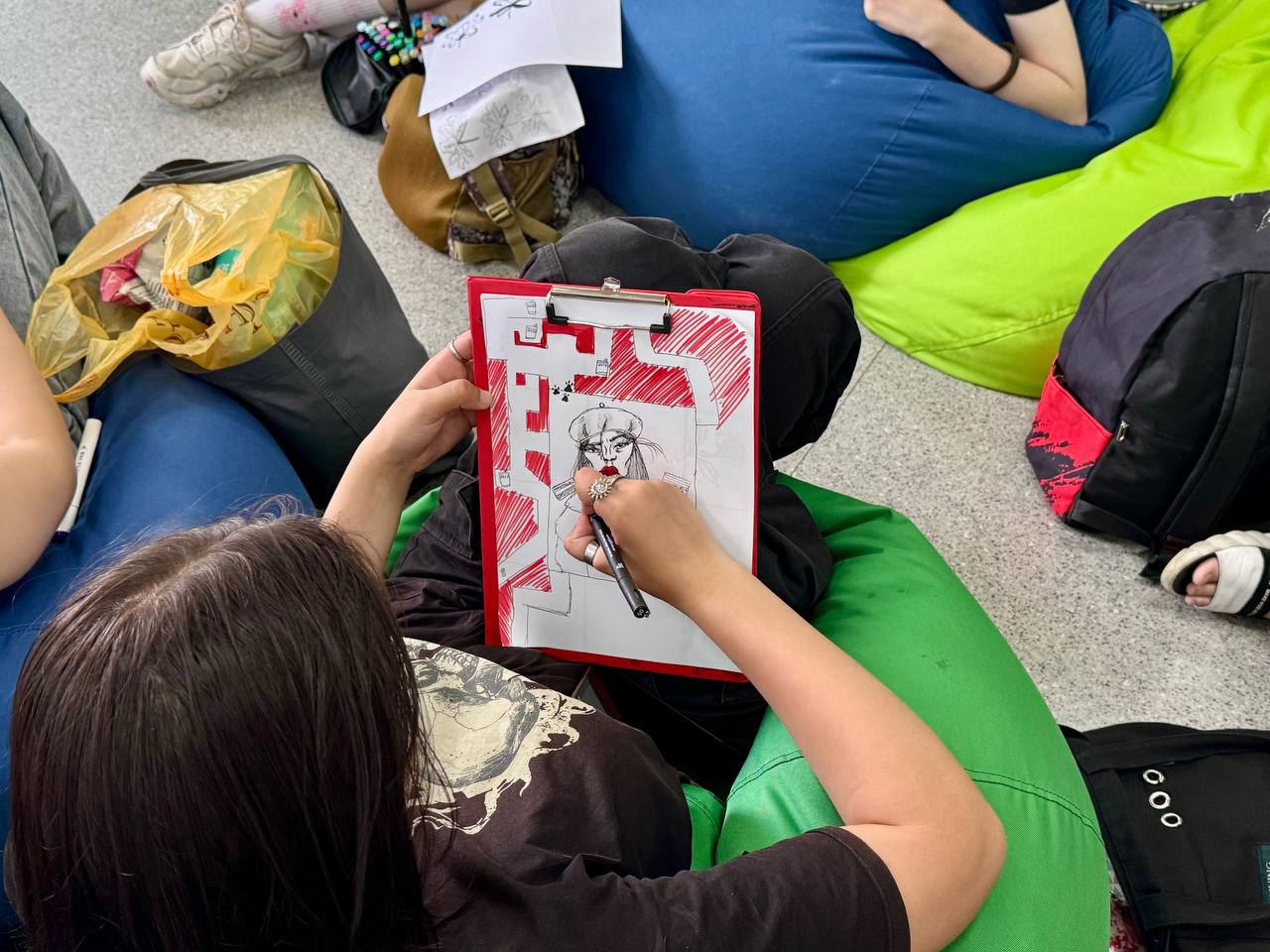
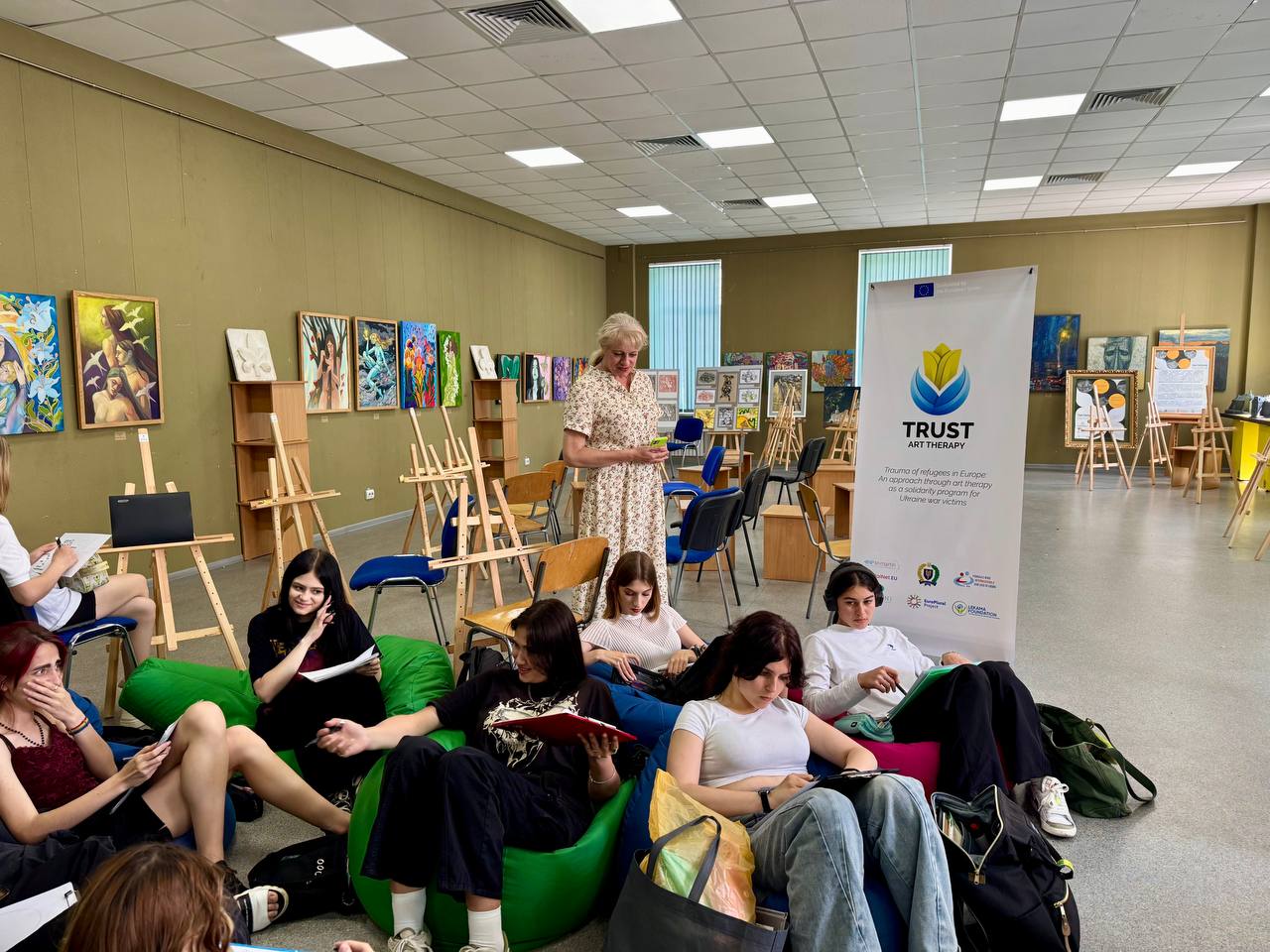

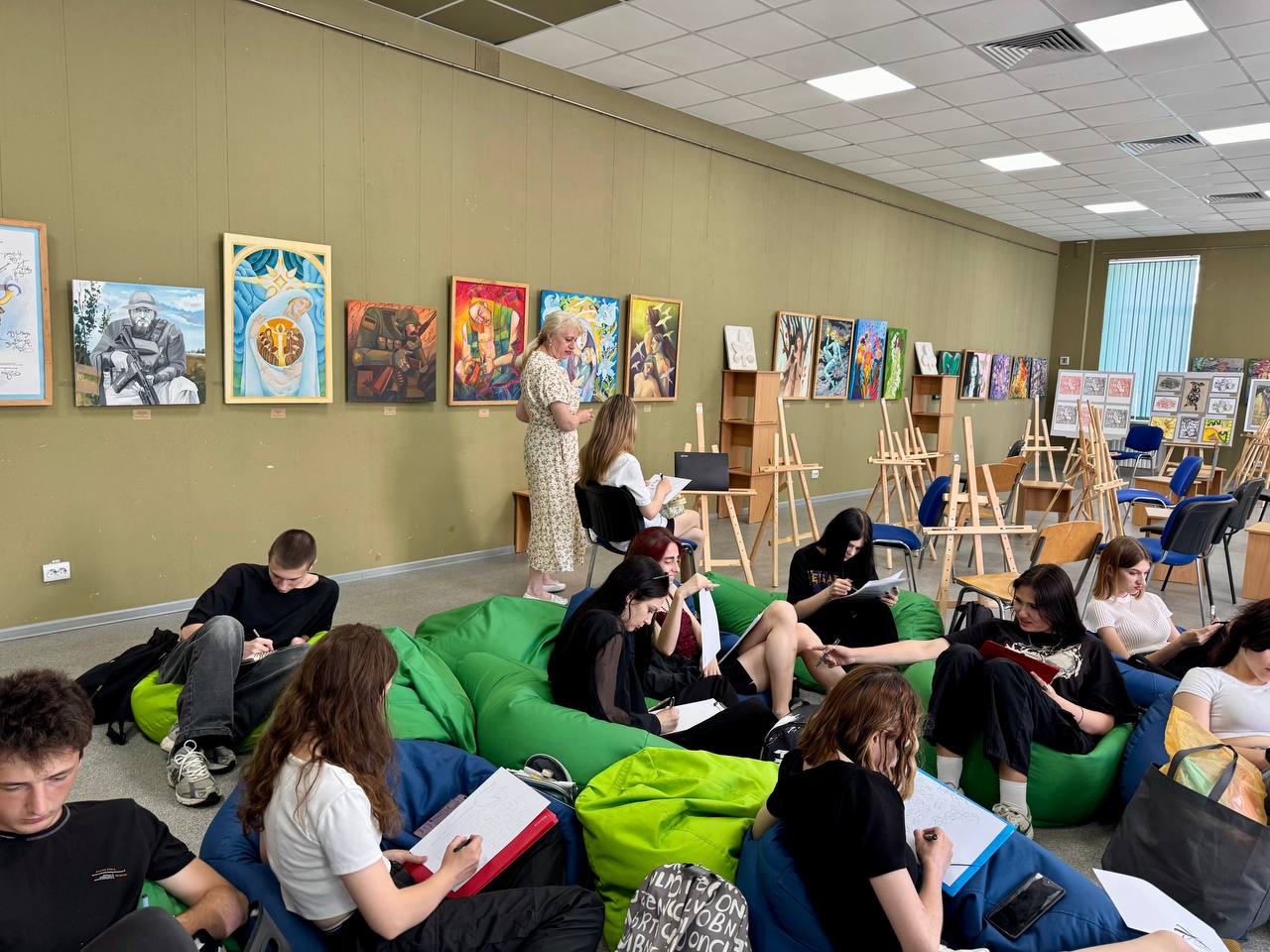
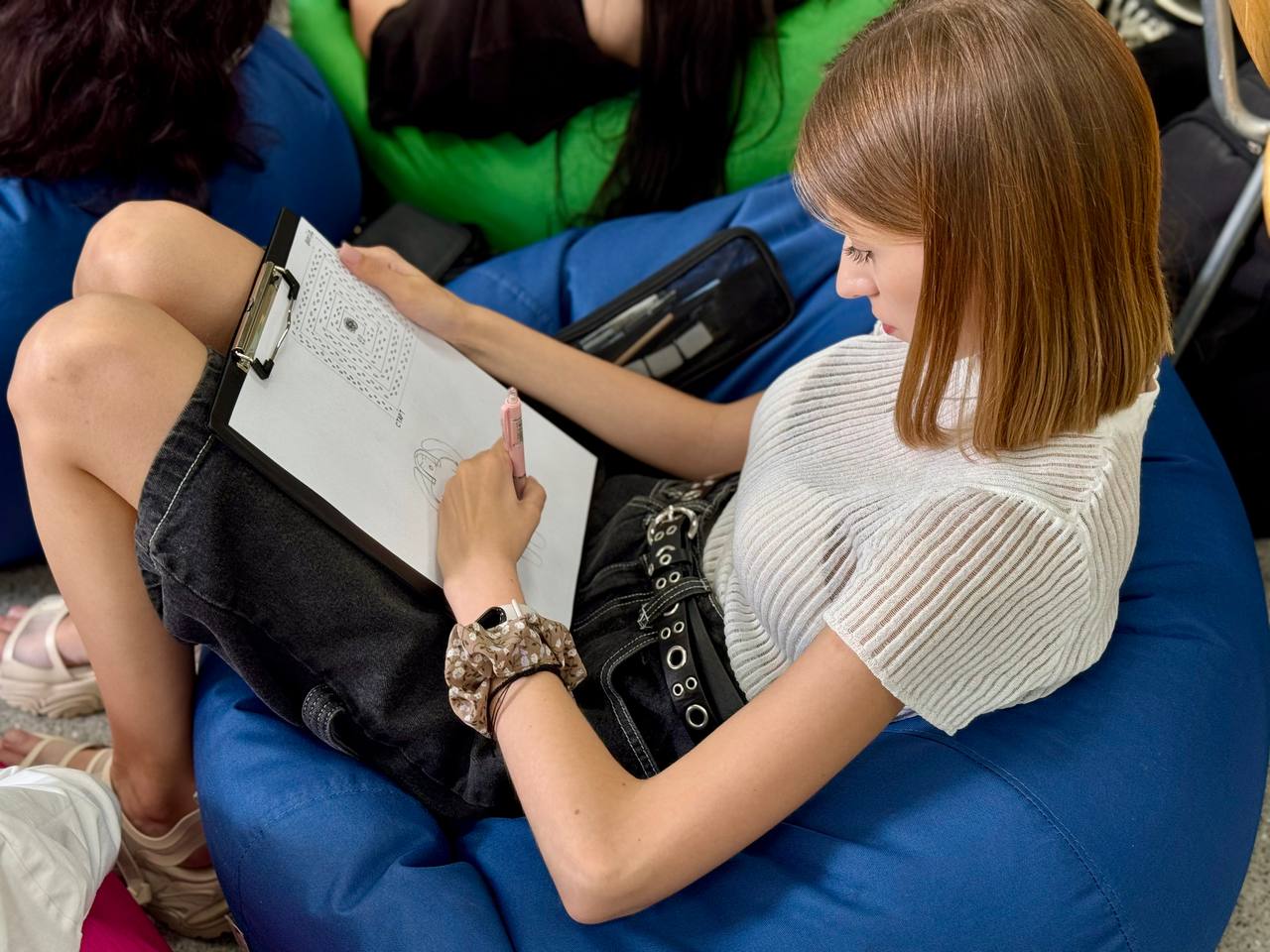
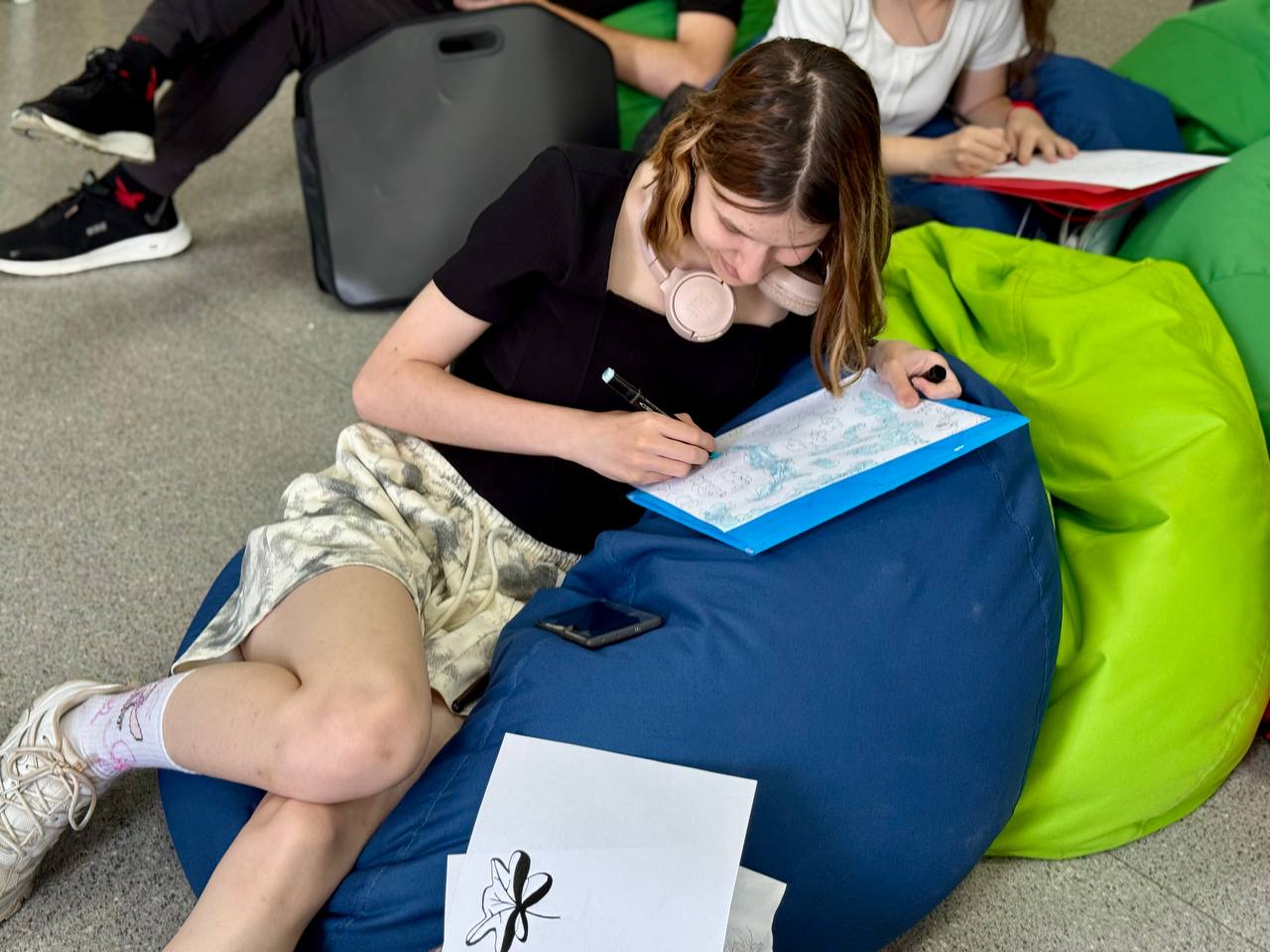
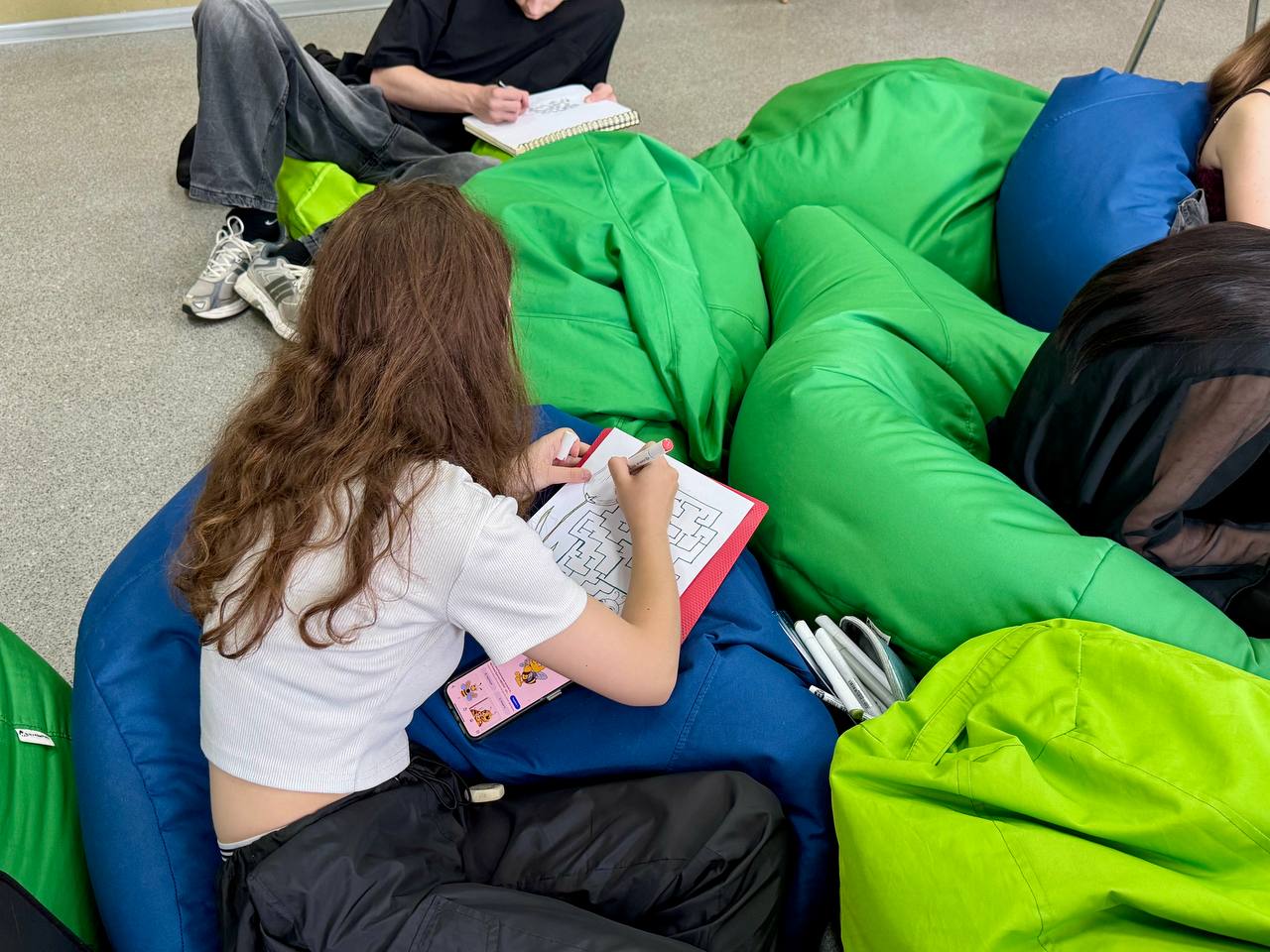
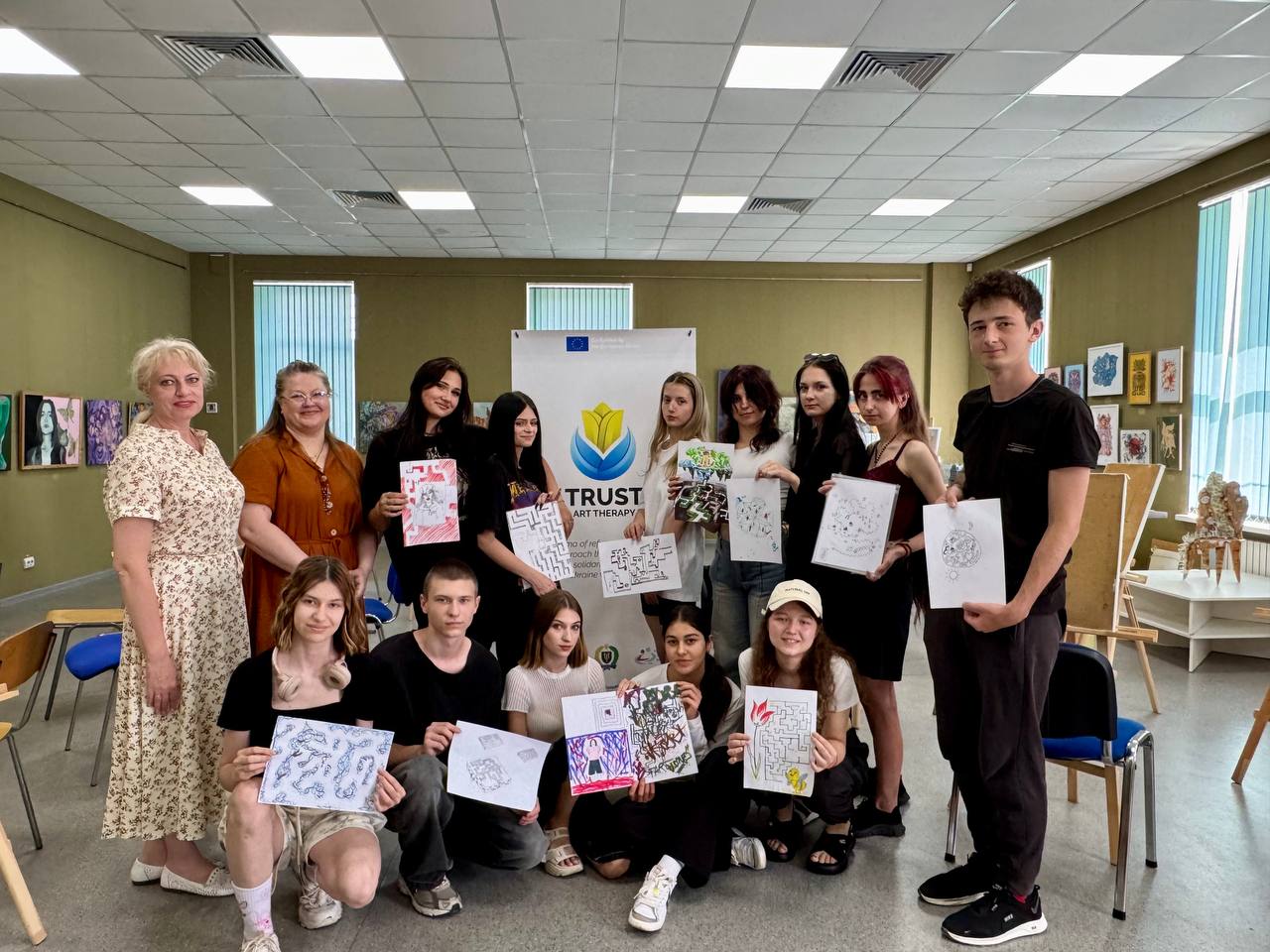
Significant was the opportunity to overcome feelings of isolation. Through the visual integration of labyrinths and interaction with others, a deeper awareness of shared experiences and group support emerged. Additionally, this session fostered flexibility of thought and a creative approach to addressing challenges, requiring unconventional thinking and new perspectives.
Ultimately, the process of drawing labyrinths became a powerful art therapy tool for navigating complex emotions, discovering new paths, and restoring inner balance. It helped participants not only gain a better understanding of themselves but also feel the support of the group, boost their creativity, and regain confidence in their strength.
Media Centre of
National University “Yuri Kondratyuk Poltava Polytechnic”



